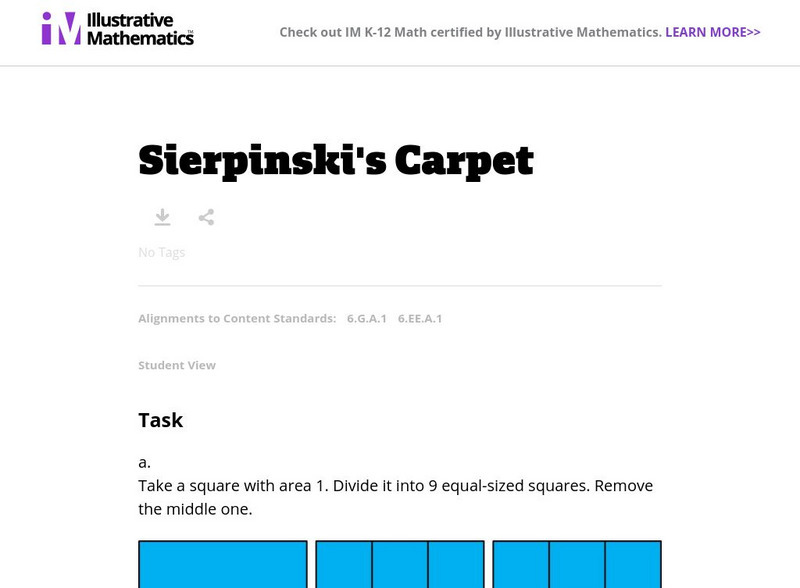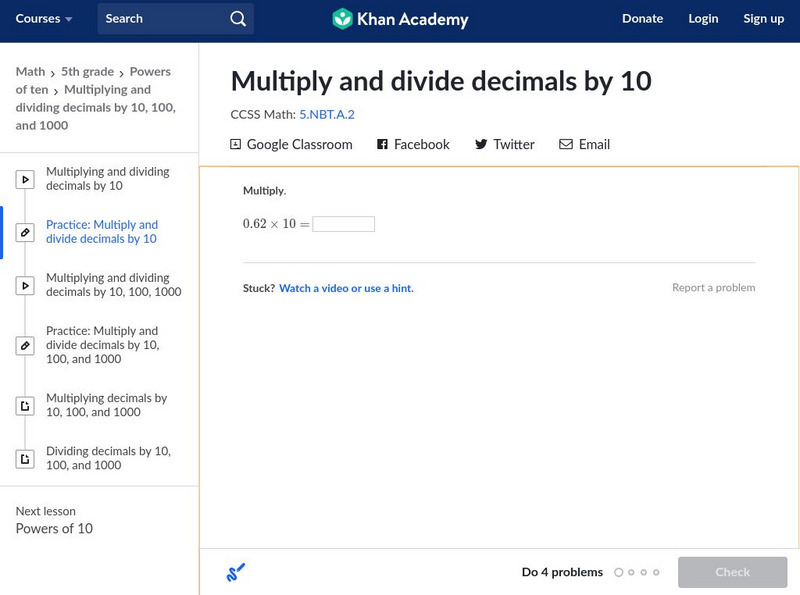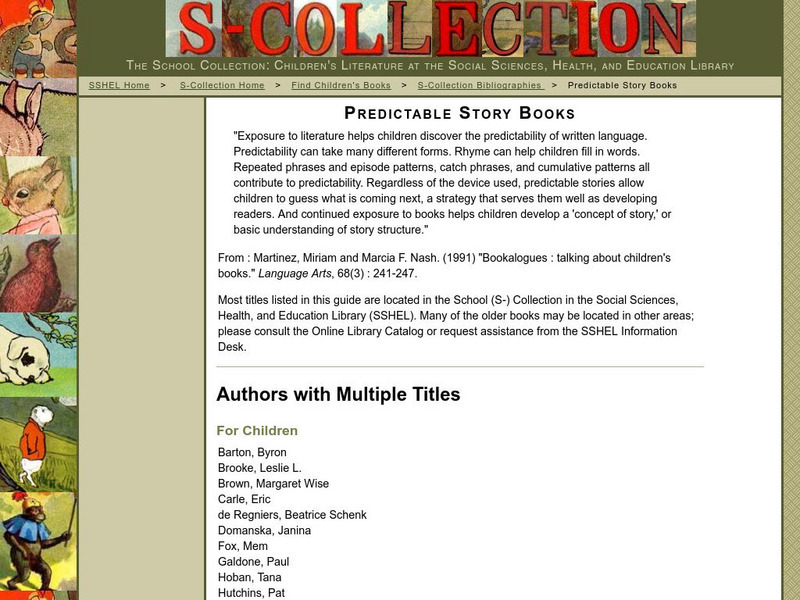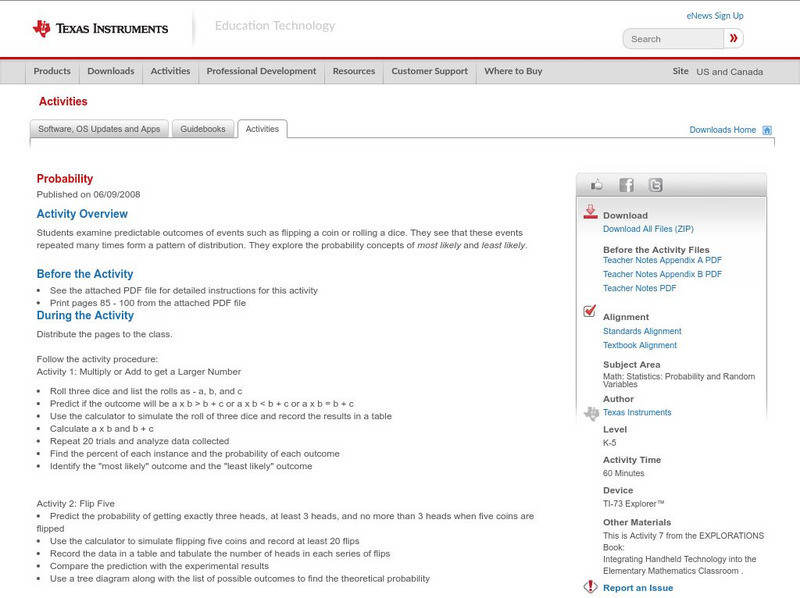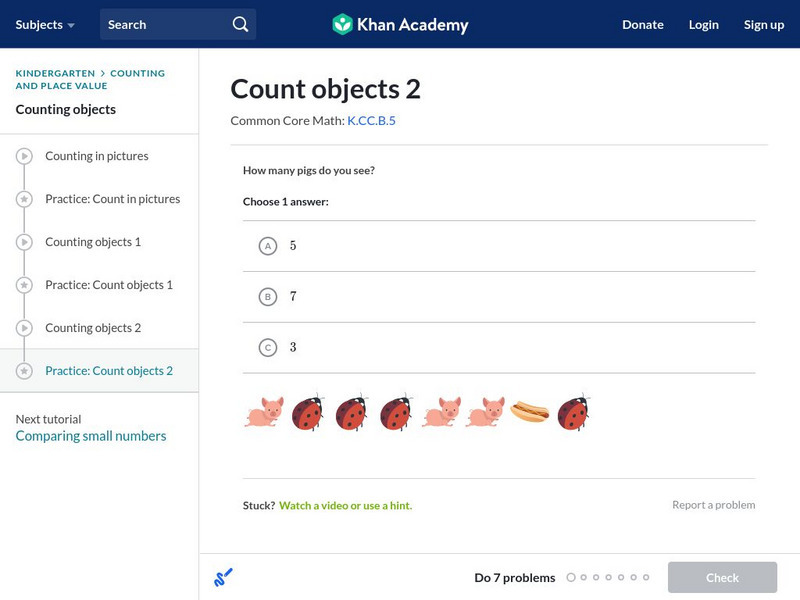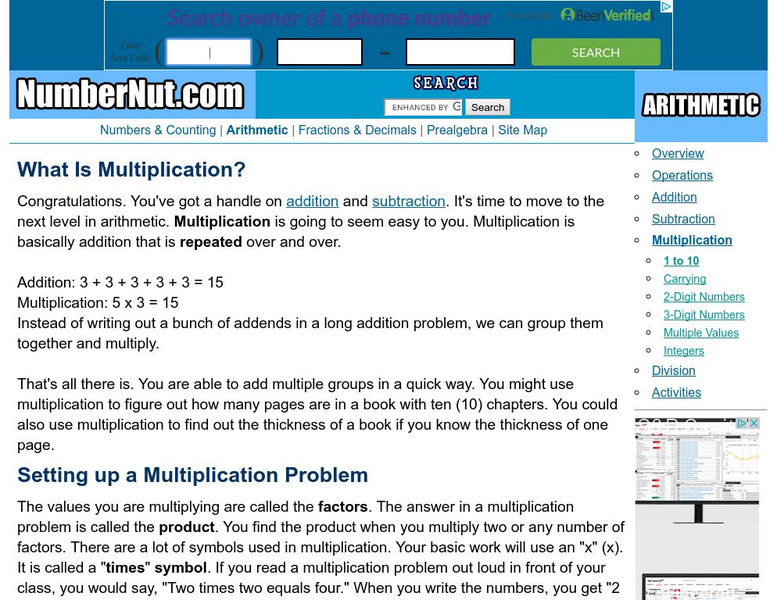Texas Instruments
Texas Instruments: Add Them Up
In this activity, students explore the total voltage provided by several batteries in a series to a battery-operated device. They graph scatter plots, understand multiplication as repeated addition, and use a pattern to develop a...
Khan Academy
Khan Academy: Multiplying and Dividing by Powers of 10
In this exercise, students practice multiplying and dividing by powers of 10. Students receive immediate feedback and have the opportunity to get hints and try questions repeatedly.
Illustrative Mathematics
Illustrative Mathematics: 6.ee,g Sierpinski's Carpet
In this task, 6th graders are presented with a large square divided into 9 squares and the center square is then removed. They are asked to find the area of the 8 remaining squares. Each smaller square is divided in the same way and the...
Khan Academy
Khan Academy: Multiply and Divide Decimals by 10
Practice multiplying and dividing decimal numbers by 10. Students receive immediate feedback and have the opportunity to try questions repeatedly, watch a video or receive hints.
Khan Academy
Khan Academy: Describing Trends in Scatter Plots
Practice making sense of trends in scatter plots. That is, explain what trends mean in terms of real-world quantities. Students receive immediate feedback and have the opportunity to try questions repeatedly, watch a video, or receive...
Better Lesson
Better Lesson: Let's Review
Revisit, Revisit, Revisit! Students need repeated exposure to math concepts to really understand how they work.
Better Lesson
Better Lesson: Smiley Faces and Up
Automaticity with patterns that allow students to easily manipulate larger numbers is the aim of this lesson plan.
Antonio Salinas and Maria Jesus Egea
Vedoque: Puntos
Try to repeat the same drawing as the model in this game. Different levels of difficulty are provided.
Ducksters
Ducksters: Science for Kids: Crystals
Kid's learn about the science of crystals. Repeating patterns of molecules form interesting shapes.
E-learning for Kids
E Learning for Kids: Math: Street Orchestra: Odd and Even Numbers
Use these interactive lessons to explore counting forward.
University of Cambridge
University of Cambridge: Nrich: Building Stars
This interactive activity gives you an opportunity to color in a tessellation that is different from the usual. Read the short introduction to find out more about this tessellation that doesn't repeat.
Other
Kids Play Park: Copy Cat Jack!
A memory game with animal sounds. Listen to the pattern and the repeat it back. A new animal sound is added each time to make it more and more challenging.
ClassFlow
Class Flow: Special Numbers
[Free Registration/Login Required] Analyze number patterns involving repeated addition (linear) or repeated to write an equation or rule.
ClassFlow
Class Flow: Types of Numbers
[Free Registration/Login Required] In this flipchart, students understand and apply concepts and procedures from algebraic sense. Students apply processes that use repeated addition. Students recognize, extend and create sequences...
University of Cambridge
University of Cambridge: Nrich: Star Find
This one page website offers two interesting tiling problems. The solution is provided here as well.
Khan Academy
Khan Academy: 2 Step Word Problems
Solve two-step word problems with addition, subtraction, multiplication, and division. Some questions include estimation. Students receive immediate feedback and have the opportunity to try questions repeatedly, watch a video or receive...
Other
Fractal Explorer
The fractal explorer shows how a very simple pattern, when repeated can produce an incredible range of images. From organic tree like structures to rigid geometric forms. Fun to use and lots of mathematical concepts involved.
University of Illinois
University of Illinois: Predictable Story Books
Several examples of predictable books are listed and organized according to type. In addition to providing titles of children's books, this resource lists related titles for young adult readers. The bibliography includes several...
Texas Instruments
Texas Instruments: Probability
Students examine predictable outcomes of events such as flipping a coin or rolling a dice. They see that these events repeated many times form a pattern of distribution. They explore the probability concepts of most likely and least likely.
Khan Academy
Khan Academy: Count Objects 2
Practice counting up to 20 objects in random patterns. Students receive immediate feedback and have the opportunity to try questions repeatedly, watch a video or receive hints.
PBS
Pbs: Negative Exponents as Fractals
Determine the relationship between graphic patterns and what they represent mathematically. This video focuses on how fractals can be a visual representation of negative exponents, which are a way to express repeated division.
Online Writing Lab at Purdue University
Purdue University Owl: Academic Writing: Sentence Variety: Strategies for Variation
This lesson offers suggestions to help you fix short, choppy sentences, combine sentences with the same subject, and revise sentences that sound the same. L.11-12.3 Language Functions/Style
NumberNut
Number Nut: Multiplication: 1 to 10
Demonstrates how to use repeated addition to multiply single-digit numbers, how to recognize number patterns that can help with understanding, as well as how to use a multiplication table for facts that need to be memorized. Includes...
Curated OER
Educational Technology Clearinghouse: Maps Etc: South China, 1971
"South China comprises the drainage basins of the middle and lower Yangtze River, the basin of the His Chiang (West River) in Kwangtung and Kwangsi; and the mountainous coastal provinces of Fukien and Chekiang. The division between the...
Other popular searches
- Repeating Patterns in Shapes
- Repeating Patterns Art
- Math Repeating Patterns
- Repeating Patterns Poetry
- Repeating Patterns Science
- Repeating Patterns in Math
- Repeating Patterns in Music
- Growing and Repeating Patterns




